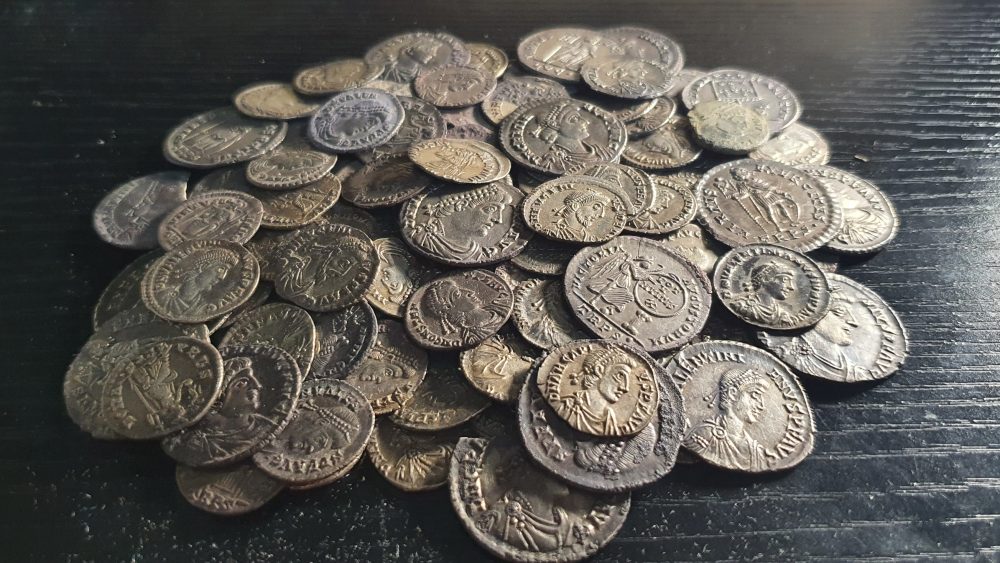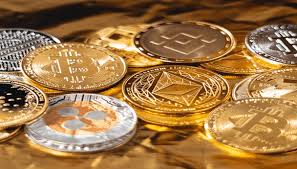The market for American bullion coins is going through hard times in 2018: it is only worth noting the downward trend in their sales, as well as the growth of their falsifications around the world. However, from the point of view of American collectors, bullion coins have not lost their appeal. The debate in this hobby mostly centers around coin design preferences.
especially the “politically correct” recent releases from the Mint, rather than bullion coins. This is in particular due to their high intrinsic value due to their high gold or silver content. Despite a recent drop in sales, coins like the gold and silver American Eagles remain among the most sought-after American coins on the planet, which may be why they are being targeted by counterfeiters.
The answer is simple: intrinsic value, or rather what people think of as intrinsic value. While the regular America the Beautiful quarter dollar coin is made up of 8.33% nickel and carry copper, the regular silver American Eagle is made from a troy ounce of 0.999 fine silver. This puts the new quarter-dollar issues of America the Beautiful at a disadvantage.
as their value is determined almost entirely by external factors (beauty of design, proof or other formats, hype over release dates, sales volume, place of minting indicated on the coin, etc.). External factors, as a rule, have less effect on investment coins, since here all attention is usually focused on the high content of the precious metal. In reality, gold and silver do not have more intrinsic value than nickel or copper, but the important thing here is that people give gold and silver more intrinsic value, and it is likely that collectors will continue to think along those lines.
Silver is also in high demand in a variety of applications, from medicine to water filtration installations, but ultimately what matters is what people think of the intrinsic value of a particular item, so experienced and new collectors have different points of view on this matter. .
For experienced American collectors, coin design is a fairly important factor in determining value. They often refer in this context to classic coins—the Mercury dime, the Liberty Walking half dollar, the Morgan dollar, the Saint-Gaudens Double Eagle—considering them to be the finest examples of U.S. numismatic art. These fine classic coins are an essential part of the collection of experienced collectors.
demonstrating their good taste and sophistication. However, for young and future collectors, in our opinion, the quality of the metal used to create the coin is of more interest than the quality of the design, since many of them are too young to remember the classic designs, believing that the yellow metal will always be valuable and liquid, and design preferences are fickle. The same, incidentally, applies to collecting works of art.
The trend of young collectors regarding the purchase and sale of works of art is very characteristic. These younger collectors are less likely to keep these coins in their collection and choose to resell them at their market value instead. Solid gold, silver, platinum coins will always be of value to investors, because even if the design is not exciting, the coin can be melted down and resold due to the precious metal it contains.
It is still too early to tell if bullion coins will eventually succeed at the forefront of the US Mint’s operations, but if current designs for other coins continue to reduce overall sales, then given the interests of a new generation of investors,
You need to be careful with small coins. It is better to buy one more coin than a handful of change. After all, the cost of manufacturing small coins is higher – as is the cost of small ingots. As for the liquidity of investments in coins, according to Allah Ishchenko, it has a support level equal to the current price of the precious metal. The upper limit of the price is the higher, the smaller the circulation of the coin and the higher the degree of safety of the coin.
The number of coins offered on the secondary market is also important – the smaller the supply of coins, the higher their value. Having bought coins, you need to take care of their safety, as any damage can significantly affect the price. Usually coins are stored in plastic bags or transparent plastic containers. It is better not to pull them out of there, because coins are more valued, on which traces of circulation are not noticeable. Gold is traditionally the best preserved, and silver coins are particularly susceptible to corrosion.
When buying a coin of the highest quality with a mirror surface (with the so-called “proof” quality), it is important not to touch its field – the loss of the purity of the mirror significantly reduces the value of the coin. But not so long ago, coins made of oxidized silver that appeared on the market can be removed from the capsule – the metal will not change its qualities from contact with hands and air.
Since the beginning of the year, gold has shown growth of at least 1% per month, which has already provoked an increased demand for investment gold coins weighing 1 and 2 troy ounces (31 g and 62 g, respectively) from private investors. According to analysts’ forecasts, by the end of 2007 the gold price will be able to overcome the bar of $700 per troy ounce (31 g). This means that if you buy a gold bar or investment coin at the beginning of this year, you can sell it at the end and get a return of at least 11%. It might not be worth selling though. After all, monetary investments are considered the most interesting for long periods – at least 2-5 years. Besides,





